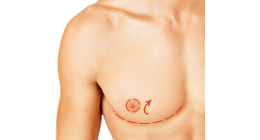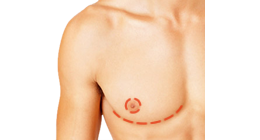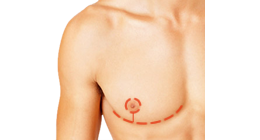Top Surgery Scars
If you're thinking about having gender-affirming Top Surgery, you've probably thought about the scars that you'll have after surgery. While some people view these scars favorably and as important markers of a gender transition (think: "battle scars"), many are interested in finding ways to get rid of Top Surgery scars, or at least minimize them.
Types of Top Surgery Scars
The different types of Top Surgery scars vary depending on the surgical technique used. Methods such as Keyhole and Peri-areolar Top Surgery result in smaller scars than Double Incision Top Surgery because they have smaller incisions, but they require a smaller chest size.
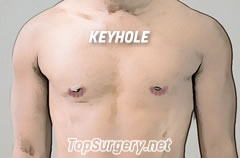
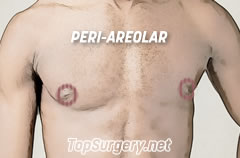
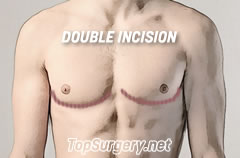
The Double Incision technique is extremely common because it's so effective at creating a flat chest even in those who are larger chested, but it produces larger scars that can be harder to conceal. If you're considering Double Incision Top Surgery, you can find out more about the possible variations in scar shape here.
How to Minimize Top Surgery Scars
Do Top Surgery scars go away? Unfortunately, no. Scar formation is a normal part of the healing process, influenced by factors such as age, genetics and skin color. Scar tissue is made up almost entirely of cells called myofibroblasts, and because scars don't contain any fat cells or hair follicles they look different from the surrounding skin and don't blend in. Scientists in the U.S. have actually discovered how to manipulate wound healing so that it leads to skin regeneration rather than scarring, and the secret is to regenerate hair follicles. Fat regenerates in response to the signals from those follicles. If the results can be replicated in a human trial it could lead to entirely new ways of wound healing without any scar formation at all. Until that happens though, we're left with figuring out how to hide Top Surgery scars.
The good news is that generally speaking, scars will fade and flatten on their own given enough time. It can take 12-18 months for scars to settle into their final appearance. You can speed things along by supporting your body during the healing process and following your surgeon's aftercare instructions.
Certain foods, vitamins and mineral supplements are known to help promote wound healing and reduce scar tissue. Before your Top Surgery, stick to a healthy, well-balanced diet, and increase your intake of protein, zinc and vitamin C.
It's also important to quit smoking. Both tobacco and cannabis smoke contain carbon monoxide which decreases the oxygen carrying capacity of hemoglobin in the blood, raising the risk of tissue death and delayed wound healing which result in more scarring. If minimizing your scars is important to you, you shouldn't smoke for at least a month before surgery.
 Your surgeon's post-operative instructions may include information about scar care. Scar treatments should be delayed until your wounds have completely closed. Dr. Javad Sajan, a popular Top Surgery surgeon in Seattle, has developed a scar treatment protocol for his patients that includes custom formulated gels and creams. Those looking for an advanced approach to scar care will find Dr. Sajan's protocol worth a closer look.
Your surgeon's post-operative instructions may include information about scar care. Scar treatments should be delayed until your wounds have completely closed. Dr. Javad Sajan, a popular Top Surgery surgeon in Seattle, has developed a scar treatment protocol for his patients that includes custom formulated gels and creams. Those looking for an advanced approach to scar care will find Dr. Sajan's protocol worth a closer look.
Topical silicone gels, strips and sheets are the #1 recommended form of scar management by healthcare professionals. Silicone scar care products are reasonably affordable and can be easily obtained at a local drug store or online. There are natural oils and plant-based products that can also be used to help improve the appearance of Top Surgery scars. Check out The Complete Guide to Surgery Scar Care at TransGuys.com for more information. This guide also addresses the debate about the effectiveness of vitamin E in scar treatment, and other ingredients to avoid in scar care products.
However you decide to treat your scars, make sure you aren't making these common mistakes.
Other tips for minimizing Top Surgery scars:
- During recovery, avoid reaching up over your head or moving your upper body in ways that can stretch your scars. Stay off the bench press!
- Wearing a binder while healing can prevent scar tissue from overstretching, widening and thickening.
- Gently massage scars to break down scar tissue.
- Keep your scars out of the sun for at least a year post-op.
For scars that are no longer responding to topical treatment, look into these professional treatments:
- Microneedling is a treatment that uses painless microscopic trauma to promote collagen growth and improves the appearance of scars. Also known as collagen induction therapy (CIT), microneedling is suitable for atrophic scars but not hypertrophic and keloid scars.
- Acupressure and acupuncture can break up scar tissue and stimulate healing.
- Steroid injections have been a trusted form of treatment for the reduction of keloids and hypertrophic scars. Triamcinolone (Kenalog) works by lowering chemicals in the body that cause swelling and inflammation.
- Laser scar removal offers rapid, reliable scar improvement. Options include Vbeam laser, Fractional CO2, Venus Viva RF, Halo, Q Switch, Erbium laser, and Intense Pulsed Light (IPL).
- Surgical excision is an appropriate solution for some aggressive hypertrophic and keloid scars, especially when done in conjunction with Laser Assisted Scar Healing (LASH).
What About Getting a Tattoo To Hide Top Surgery Scars?
Once you're completely healed from your Top Surgery, it's safe to get a tattoo over your Top Surgery scars to conceal them. However, tattoos may wind up having the opposite effect, drawing attention to your Top Surgery scars. If scarring has negatively affected the size and/or shape of the areola, medical tattooing is particularly useful for adjusting this.
Even though Top Surgery is likely to leave some scarring, most people find that it's a reasonable trade-off. Not only do Top Surgery scars fade with time but there are also a number of ways to treat them, and the self-care associated with many forms of scar treatment can help you reconnect with your chest after surgery.
Last updated: 11/14/22
